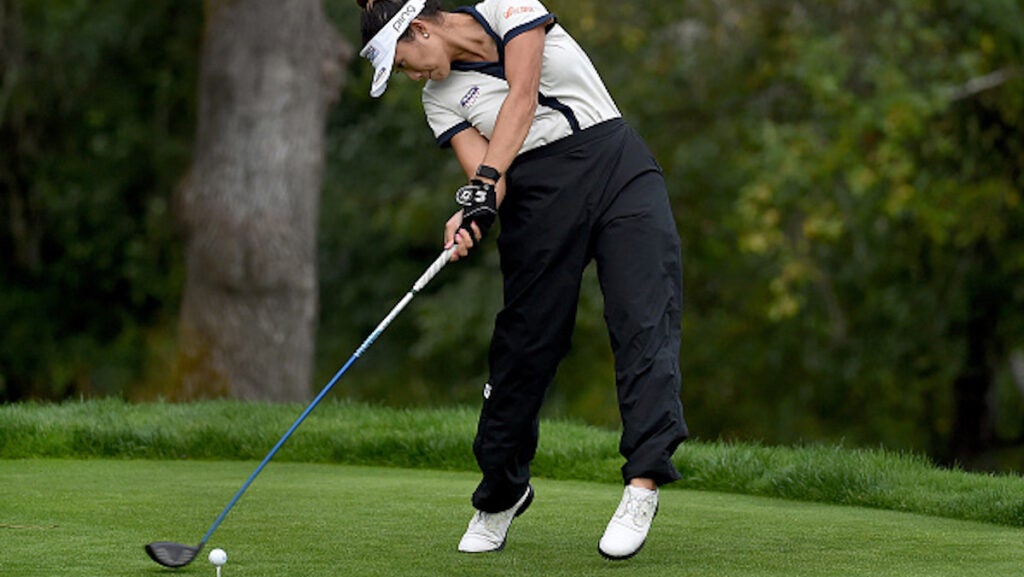It’s always exciting when a young gun bursts onto the scene and immediately establishes themselves as one of the longest hitters on tour. We saw it with Bubba Watson and we’ve seen it more recently with Cameron Champ; on the LPGA Tour we’ve seen it with Maria Fassi and Anne Van Dam.
Now, we’ve got another new name to add to the mix: Bianca Pagdanganan.
Pagdanganan is an NCAA Championship-winning golfer from the University of Arizona who turned professional this year. She’s made four starts so far and though the results haven’t been overly eye-catching, she’s rocketed-up to first in the LPGA Tour’s Driving Distance rankings.
Talking to Golfweek‘s Beth Ann Nichols about her 287-yard average, she explained it simply:
“I literally just try to hit it as hard as I can and it goes far,” she said.
Perhaps the most eye-catching element of Bianca’s golf swing is — similar to Justin Thomas’ swing — the way her left foot works on the downswing. But while JT’s left foot gets close to coming off the ground, Bianca’s gets fully airborne, as you can see below:
That, GOLF Top 100 Teacher Jonathan Yarwood says, is the result of Bianca using the ground to generate more swing speed.
“Science is showing us the code for long hitting and it’s being embraced across the board,” he says. “Vertical force is a vital component to long hitting. Jumping your lead side up and out the way transfers speed to the ball through ground reaction force.”
As Yarwood notes, Bianca is pushing into the ground and then jumping off the ground — generating “vertical force” — as she pulls her arms through. She’s using the ground as leverage to push and pull off of it. That’s something you can try yourself: Shifting your weight into your lead foot at the start of your downswing, and then pushing up off of it later in the downswing.
“Only the trail toe is in contact with the ground,” Yarwood adds. “In days gone by, coaches might have coached that out in favor of balance and poise.”
